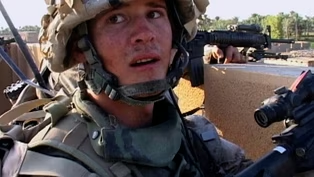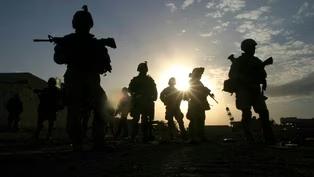
Cemetery Battle
Clip: 11/10/2025 | 3m 38sVideo has Closed Captions
August 2004, U.S. forces engage with a Shiite militia in the Southern Iraqi city of Najaf.
In August 2004, U.S. forces engage with the Shiite Mahdi militia in the Southern Iraqi city of Najaf. After fighting through their way through the city center, the troops find themselves in an ancient, above ground cemetery – a maze of mayhem, minarets and murder.
Problems playing video? | Closed Captioning Feedback
Problems playing video? | Closed Captioning Feedback

Cemetery Battle
Clip: 11/10/2025 | 3m 38sVideo has Closed Captions
In August 2004, U.S. forces engage with the Shiite Mahdi militia in the Southern Iraqi city of Najaf. After fighting through their way through the city center, the troops find themselves in an ancient, above ground cemetery – a maze of mayhem, minarets and murder.
Problems playing video? | Closed Captioning Feedback
How to Watch The Last 600 Meters: The Battles of Najaf and Fallujah
The Last 600 Meters: The Battles of Najaf and Fallujah is available to stream on pbs.org and the free PBS App, available on iPhone, Apple TV, Android TV, Android smartphones, Amazon Fire TV, Amazon Fire Tablet, Roku, Samsung Smart TV, and Vizio.
Buy Now
Providing Support for PBS.org
Learn Moreabout PBS online sponsorship♪ ♪ 1ST LT.
MOULTON: The terrain was just unbelievable.
It was- it was unlike anything that I ever would have anticipated.
I mean the tombs were all above ground and below ground, but they were big structures.
It's not like an American cemetery where you just have a- a wide-open flat space with- with gravestones, no, these are, these are very elaborately constructed tombs.
And they were practically all built on top of each other.
(gunfire) ♪ CAPT.
MORAN: It's just a huge cemetery.
I think it's 15 square kilometers, and people describe it as a- as a New Orleans-style cemetery on- on steroids.
(gunfire and explosions) ♪ (gunfire and explosions) ♪ (gunfire and explosions) ♪ 1ST LT.
MOULTON: It also provided an incredible defensive position for the militia because they could hide anywhere.
I mean they could hide underground; they could hide above us in these little minarets, in these mini-mosques and, they could pop out from behind these tombs, you know, a mere five or ten feet in front of us without our knowing that they were there beforehand.
♪ MAST.
SGT.
ERICKSON: As soon as I got there, told their commander, "Sir, we're- we want to start, we want to start- "we want to start "conducting sniper operations tonight.
We want to infill as soon as the sun goes down."
And, I told him that I wanted to go all the way up to within about 400 meters of the Old City.
I told him I wanted to go down the other end of the gravesite- graveyard basically and he looked at me and said, "Sergeant, you're going to die."
And I said, "Sir, what are you talking about?"
And he got this thousand- yard stare and he told me about how an M1 Abrams tank with a Bradley behind it had gone down one of these small, funeral roads that runs north to south.
Very narrow road, no room for vehicles to maneuver.
And as it drove down a Mahdi Militia man had jumped from behind a grave onto the top of the tank, had shot the commander and the loader, the two Americans on the top of the tank, and had jumped off the other side of the tank before the Bradley fighting vehicle behind it could engage them and had disappeared.
And, because of that it was almost as though there was a boogeyman out there.
They knew during the day watching them with unmanned aerial vehicles that there were small groups of bad guys out in the city, but they knew that there were more at night.
They were hiding down in the catacombs.
(gunfire)
Video has Closed Captions
Clip: 11/10/2025 | 3m 35s | From down-time to go-time, war changes by the moment and is often a matter of millimeters. (3m 35s)
Video has Closed Captions
Preview: 11/10/2025 | 30s | The deadliest battles of the Iraq War are revealed in the words and deeds of those who fought there. (30s)
Providing Support for PBS.org
Learn Moreabout PBS online sponsorshipSupport for PBS provided by:

















